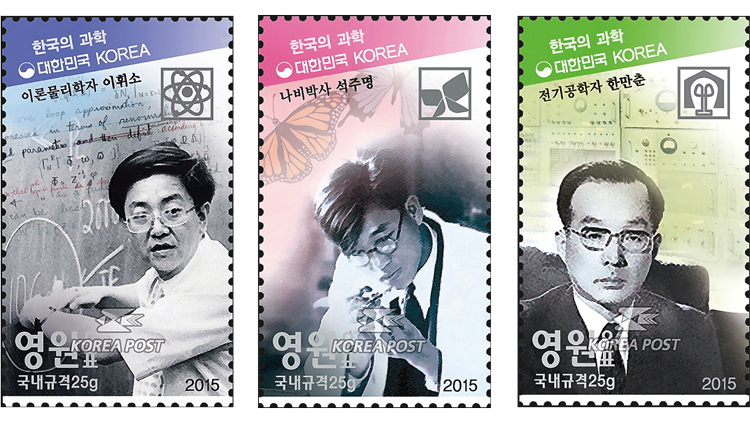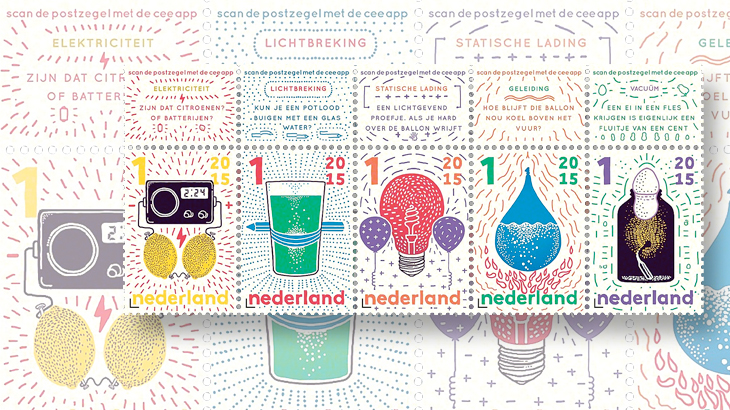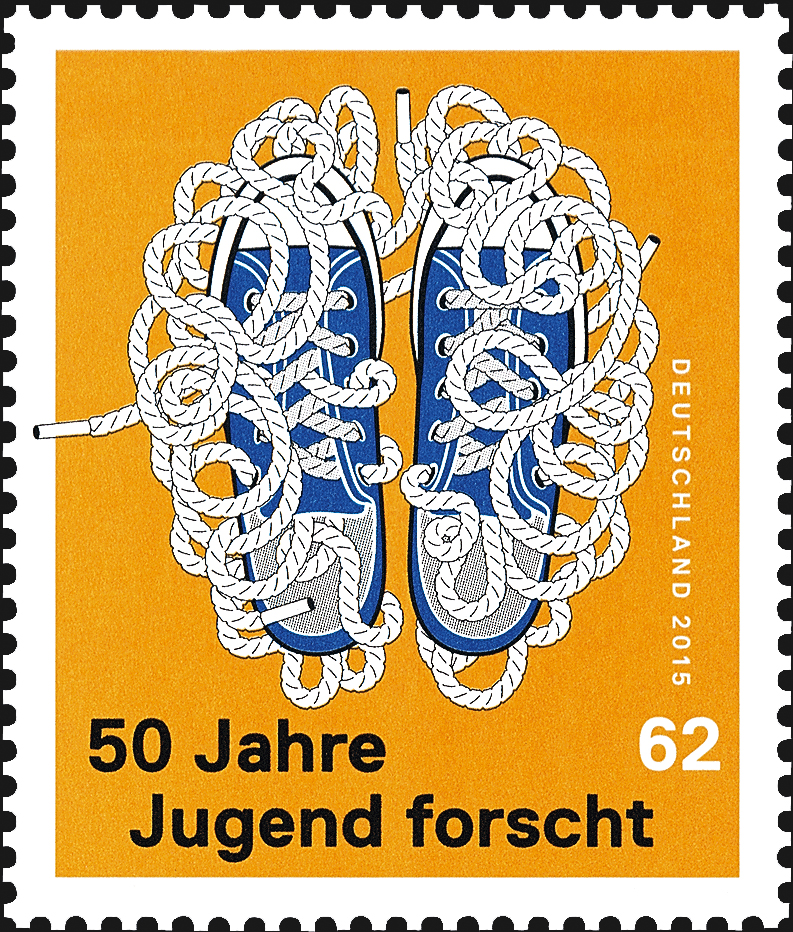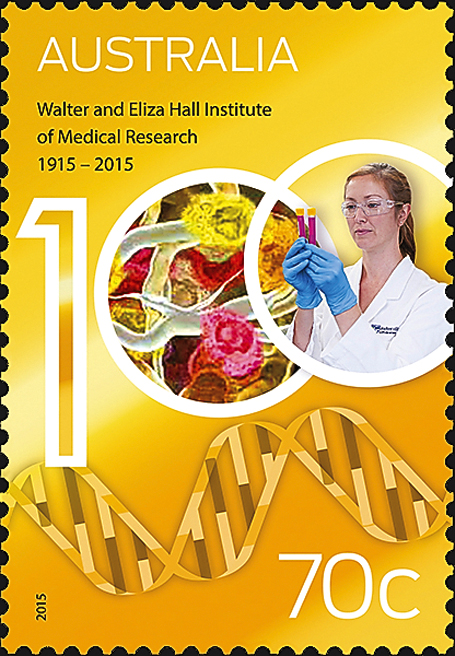World Stamps
Stamps from the Netherlands feature simple physics experiments
By Denise McCarty
Physics experiments that children can perform at home are illustrated on five stamps from the Netherlands.
Called Discover Science, the stamps were to be issued July 20 in panes of 10 (two of each design) in collaboration with the Science Center Nemo, a hands-on interactive science and technology museum in Amsterdam.
Each stamp includes an embedded code that links through a smart phone to the museum’s website.
The first stamp at upper left on the pane shows a lemon battery. According to the Kids Science for Real website, all you need to make this battery is a screw, a coin (made of copper), a lemon and wires. The site also recommends potato, tomato, orange and banana batteries for those who want to experiment further with food that can generate electricity.
The next stamp illustrates light refraction by showing what appears to be a bent pencil and a glass of water. The Merriam-Webster dictionary defines refraction as “deflection from a straight path undergone by a light ray or energy wave in passing obliquely from one medium (as air) into another (as glass) in which its velocity is different.”
Two stamps feature experiments with balloons.
One design depicts a light bulb charged by the static electricity from two balloons.
The other shows a balloon filled with water over small flames of fire. Normally when a balloon is placed over a flame, the balloon pops. However, when it is filled with water, the water absorbs the heat and the balloon does not pop.
The final stamp shows a hard-boiled egg being squeezed through the narrow neck of a bottle. This experiment illustrates air pressure.
The American Physical Society’s Physics Central website calls this experiment “the egg squeeze” and explains what is happening: “When you light the fire inside the glass jar, the temperature will rise. According to the ideal gas law, the pressure will rise as the temperature increases so long as the volume remains fixed. This extra pressure will push up on the egg, allowing some air to escape.
“Then when the match goes out, the temperature decreases and the air pressure decreases. Consequently, the air pressure inside will be less than the air pressure outside, and the egg will be pushed into the bottle.”
Jorn Dale designed the stamps, and Cartor Security Printing of Meauce, France, printed them by offset. A label attached to each stamp gives additional details about the experiment shown.
The stamps, like most recent issues from the Netherlands, are nondenominated. The “1” in the upper-left corner of each design represents payment of the basic first-class rate.
Germany
A 0.62 Germany commemorative issued June 11 marks the 50th anniversary of a science competition for young people, Jugend Forscht (youth research).
The competition is open to young scientists starting in the fourth grade up to age 21.
Henri Nannen, editor-in-chief of Stern magazine, established the contest in 1965, modeling it on science fairs in the United States, according the Jugend Forscht website.
Matthias Beyrow designed the stamp, and Deutsche Post, the German postal authority, described it as “brain meets sneaker.”
Bundesdruckerei in Berlin printed it by offset in panes of 10.
South Korea
On April 10, South Korea introduced a new series of stamps devoted to science.
The first set in this Science in Korea series honors the following three scientists and engineers: Korean-American theoretical physicist Benjamin W. Lee (1935-77); entomologist Ju Myeong Seok (1908-50), who studied Korea’s butterflies; and electrical engineer Man Choon Han (1921-84).
On the stamp designs, each man is shown with items representing his work. For example, butterflies are included on the stamp for Seok.
Jaeyong Shin designed the stamps. Cartor printed them by offset in sheets of 18 (six of each design).
Australia
Australia issued a 70¢ stamp June 30 commemorating its oldest medical research institute, the Walter and Eliza Hall Institute of Medical Research, founded 100 years ago in 1915.
On its website, the institute reports that its “discoveries have advanced scientific thinking, improved clinical practice and resulted in new and more effective treatments for patients.”
Director Doug Hilton said: “From antivenins for snake bite, new treatments for autoimmune diseases, techniques to mass-produce flu vaccines, and cancer support therapies that have helped 20 million people recover from chemotherapy. Our successes have been built upon generous philanthropic support from the community.”
According to Australia Post, Dr. Tracy Putoczki is pictured on the stamp. Putoczki is head of the institute’s inflammation division, which “studies how communication between cells influences health and disease.”
Nicholas Girling designed the stamp. RA Printing printed it by offset in panes of 10.
A prestige booklet with stamps, text and illustrations also was issued.
MORE RELATED ARTICLES
Headlines
-
US Stamps
Oct 7, 2024, 3 PMMcMurtrie dismissed as APS education director following Sept. 21 arrest
-
US Stamps
Oct 7, 2024, 12 PMVasiliauskas named president of Mystic Stamp Co.
-
US Stamps
Oct 6, 2024, 5 PMApgar souvenir card available
-
US Stamps
Oct 6, 2024, 4 PMFirst Continental Congress and U.N. stamps receive Scott catalog numbers










